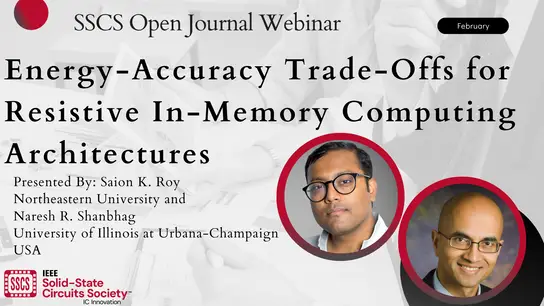Detectability of Breast Tumor by a Hand-held Impulse-Radar Detector:Performance Evaluation and Pilot Clinical Study
Takamaro Kikkawa
-
Members: FreeSSCS
IEEE Members: $11.00
Non-members: $15.00Length: 59:20
12 Apr 2019
ABSTRACT
A hand-held impulse-radar breast cancer detector is presented and the detectability of breast cancers is demonstrated in clinical tests at Hiroshima University Hospital. The functional core of the detector consists of 65-nm CMOS integrated circuits covering the ultrawideband spectrum to generate, transmit, and detect Gaussian monocycle pulses at an equivalent-time sampling rate of 100 GS/s, and a single-port eight-throw switching matrix for controlling a 16-antenna array. The detector is designed to be placed on the breast of a patient in the supine position. Images of breast cancers are reconstructed by confocal imaging, consistent with those rendered by Magnetic Resonance Imaging, thereby demonstrating the feasibility of the hand-held impulse-radar detector for malignant breast tumors.
BIO
Takamaro Kikkawa received the B.S. and M.S. degrees in Electronic Engineering from Shizuoka University, Shizuoka, Japan in 1974 and 1976, respectively, and the Ph.D. degree in Electronic System from Tokyo Institute of Technology, Tokyo, Japan in 1994. He was with NEC Corporation, Tokyo, Japan, in 1976-1998, where he conducted the research and development of interconnect technologies for logic ULSI and DRAM. He was a Visiting Scientist at MIT, Cambridge, MA, in 1983-1984, where he studied SOI devices. He joined Hiroshima University, Hiroshima, Japan, in 1998, where he is currently a Professor at the Research Institute for Nanodevice and Bio Systems. He is an IEEE Life Fellow and Fellow of the Japan Society of Applied Physics.
A hand-held impulse-radar breast cancer detector is presented and the detectability of breast cancers is demonstrated in clinical tests at Hiroshima University Hospital. The functional core of the detector consists of 65-nm CMOS integrated circuits covering the ultrawideband spectrum to generate, transmit, and detect Gaussian monocycle pulses at an equivalent-time sampling rate of 100 GS/s, and a single-port eight-throw switching matrix for controlling a 16-antenna array. The detector is designed to be placed on the breast of a patient in the supine position. Images of breast cancers are reconstructed by confocal imaging, consistent with those rendered by Magnetic Resonance Imaging, thereby demonstrating the feasibility of the hand-held impulse-radar detector for malignant breast tumors.
BIO
Takamaro Kikkawa received the B.S. and M.S. degrees in Electronic Engineering from Shizuoka University, Shizuoka, Japan in 1974 and 1976, respectively, and the Ph.D. degree in Electronic System from Tokyo Institute of Technology, Tokyo, Japan in 1994. He was with NEC Corporation, Tokyo, Japan, in 1976-1998, where he conducted the research and development of interconnect technologies for logic ULSI and DRAM. He was a Visiting Scientist at MIT, Cambridge, MA, in 1983-1984, where he studied SOI devices. He joined Hiroshima University, Hiroshima, Japan, in 1998, where he is currently a Professor at the Research Institute for Nanodevice and Bio Systems. He is an IEEE Life Fellow and Fellow of the Japan Society of Applied Physics.
Primary Committee:
SSCS


